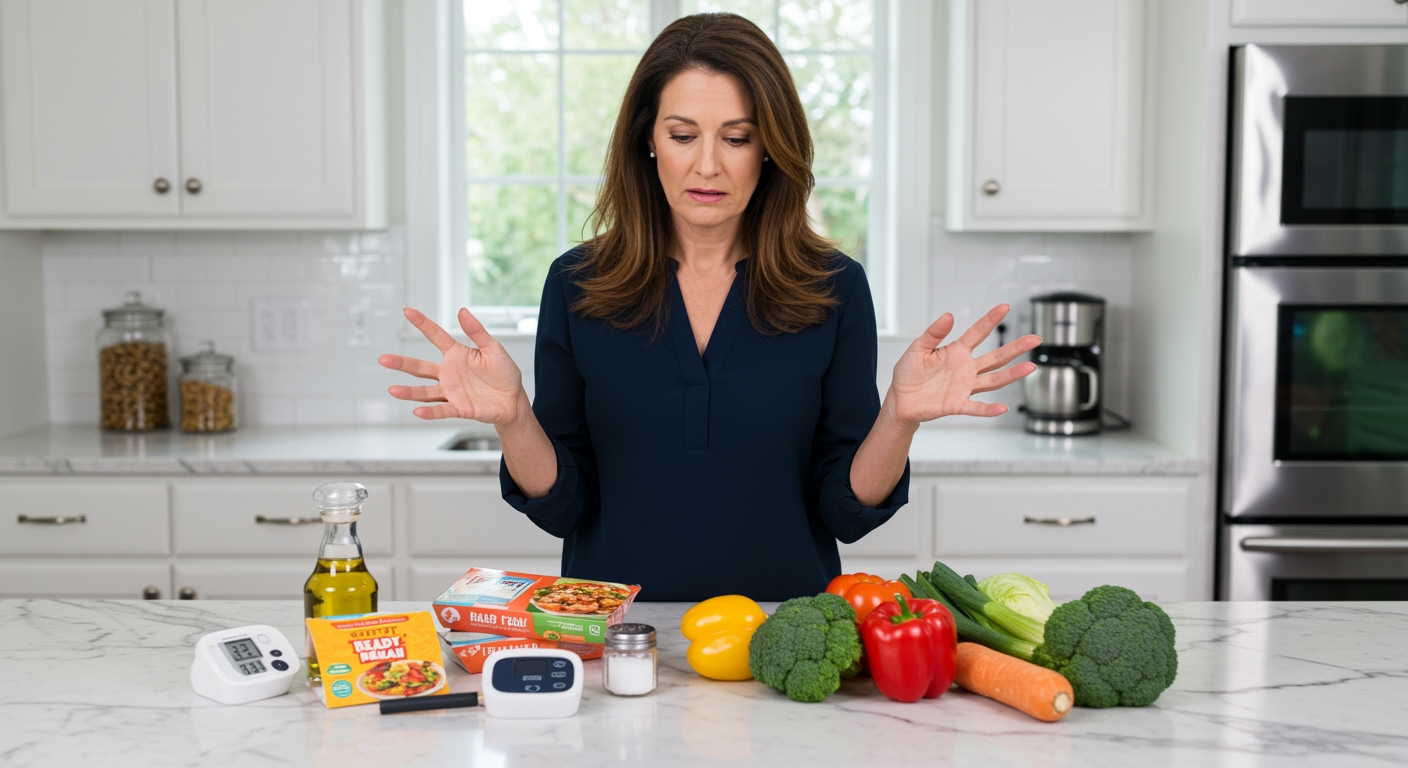✪ Key Takeaway: Not all ready meals are dangerous for hypertensive patients, but most contain excessive sodium that requires careful selection.
Introduction
Your doctor just told you that your blood pressure is too high and you need to watch your diet.
You might be wondering if those convenient ready meals sitting in your freezer are now off-limits forever.
Hi, I’m Abdur, your nutrition coach and today I’m going to explain whether hypertensive patients should completely avoid ready meals or if there are smarter ways to navigate this convenience food category.
What Makes Ready Meals Dangerous For Blood Pressure?
The biggest problem with most ready meals is their sodium content.
Food manufacturers add massive amounts of salt to preserve flavor and extend shelf life.
A single ready meal can contain anywhere from 800 to 2,300 milligrams of sodium.
The American Heart Association recommends no more than 2,300 milligrams of sodium per day for healthy adults.
For people with high blood pressure, the ideal limit drops to just 1,500 milligrams daily.
When you consume excess sodium, your body retains more water to dilute the salt concentration in your bloodstream.
This extra fluid increases the volume of blood flowing through your arteries, which directly raises your blood pressure and forces your heart to work harder.
✪ Fact: Some frozen dinners contain more sodium than three bags of potato chips combined.
Are There Any Safe Ready Meal Options?
Not all ready meals are created equal when it comes to sodium content.
Some companies now produce heart-healthy versions specifically designed for people managing blood pressure.
Look for ready meals that contain less than 600 milligrams of sodium per serving.
These lower-sodium options often use herbs, spices, and natural flavor enhancers instead of relying heavily on salt.
Fresh or frozen meals from the refrigerated section typically contain less sodium than shelf-stable options.
Meals labeled as heart-healthy, low-sodium, or designed for diabetics usually meet stricter sodium guidelines.
However, you still need to read the nutrition label carefully because marketing claims can be misleading.
✪ Pro Tip: Choose ready meals with less than 10% of your daily sodium limit per serving.
How Should You Read Ready Meal Labels?
The nutrition facts panel on ready meal packaging contains crucial information for managing your blood pressure.
Always check the sodium content first and compare it to your daily limit.
Pay attention to the serving size because some packages contain multiple servings.
If a meal claims to serve two people but you eat the whole package, you need to double all the nutritional values.
Look for meals that provide at least 3 grams of fiber and some protein to help you feel satisfied.
Check the ingredient list for hidden sources of sodium like monosodium glutamate, sodium phosphate, or sodium citrate.
Avoid meals with ingredients you cannot pronounce or recognize, as these often indicate heavy processing.
✪ Note: Sodium content can vary by 500-1000mg between similar ready meal products from different brands.
What Are Better Alternatives To Traditional Ready Meals?
You can create your own healthier ready meals with some simple meal prep strategies.
Cook large batches of low-sodium recipes on weekends and portion them into individual containers.
Freeze these homemade meals for the same convenience as store-bought options.
Focus on recipes that include lean proteins, whole grains, and plenty of vegetables.
Use herbs and spices like garlic, oregano, basil, and black pepper to add flavor without sodium.
Consider meal kit services that offer heart-healthy options with controlled sodium levels.
Fresh meal delivery services often provide better nutritional control than frozen ready meals from the grocery store.
✪ Pro Tip: Batch cooking one day per week can provide you with healthy ready meals for the entire week.
The Bottom Line
Hypertensive patients do not need to completely avoid all ready meals, but they must be extremely selective about which ones they choose.
Smart food choices require reading labels, not avoiding entire food categories, and this principle applies perfectly to ready meals and blood pressure management.
I would love to hear about your experiences with finding heart-healthy convenience foods or any questions you have about managing sodium intake in the comments below.
References
At NutritionCrown, we use quality and credible sources to ensure our content is accurate and trustworthy. Below are the sources referenced in creating this article:
- PMC: Ultra-processed foods and cardiovascular risk
- British Heart Foundation: Ultra-processed foods linked to cardiovascular risk
- Medical News Today: Low sodium meals for hypertension
- ACL: Managing Sodium in Meals and Menus





